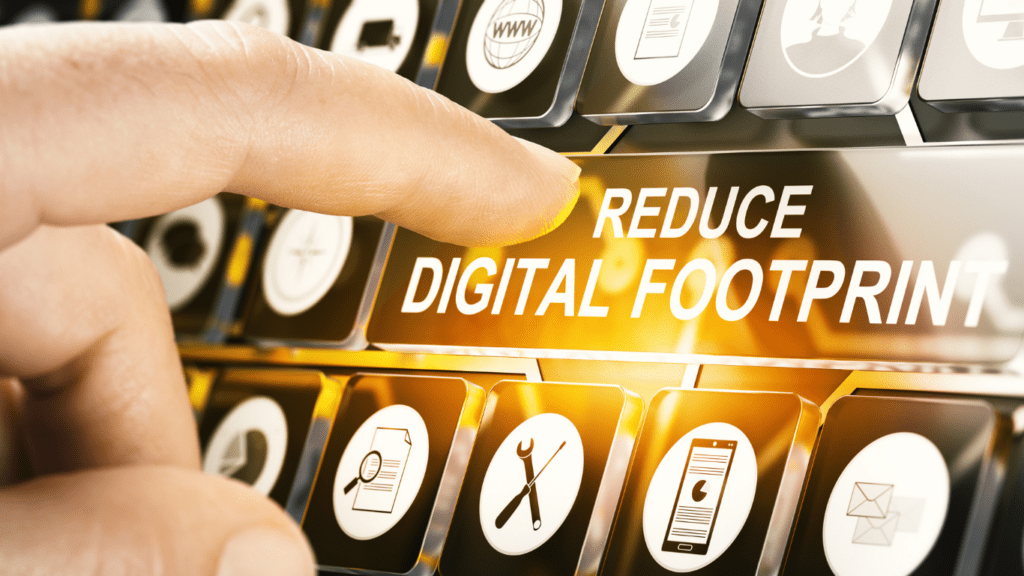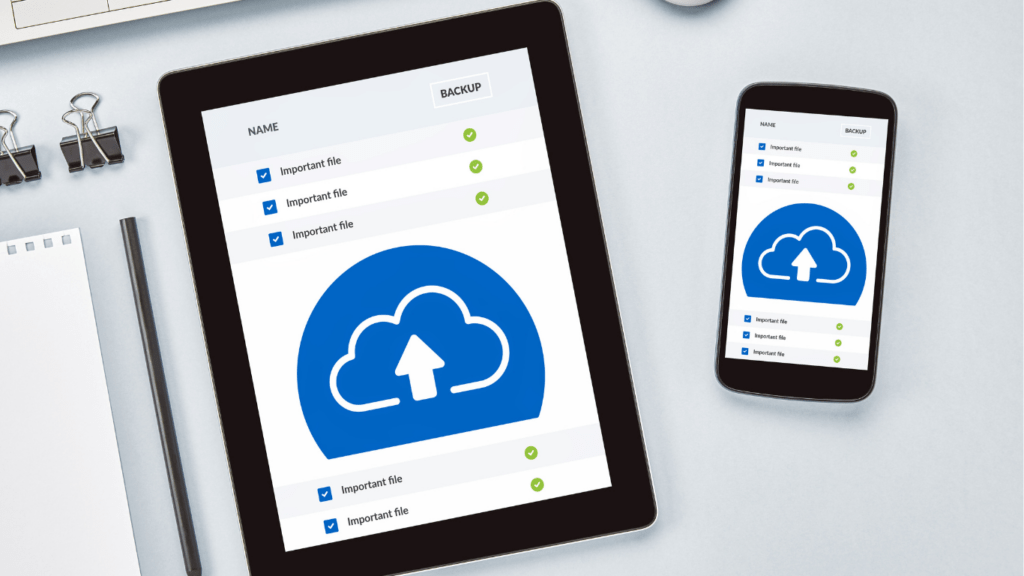Ever wondered how much of your personal information is floating around online? Every click, search, and social media post leaves a trace—a digital footprint that can reveal more about you than you’d like. In today’s hyper-connected world, managing this trail isn’t just a good idea; it’s essential for protecting your privacy and security.
Understanding Your Digital Footprint
Your digital footprint represents the trail of data you leave behind through online activities. It includes everything from browsing histories to social media interactions.
What Is a Digital Footprint?
A digital footprint is the collection of information generated by your online interactions and activities. This can be categorized into two types: active and passive footprints. Active footprints occur when you deliberately share data, such as posting updates or signing up for services. Passive footprints result from automated processes, like websites tracking your IP address or cookies storing your preferences.
Examples of digital footprints include:
- social media posts
- email metadata
- location services
- online purchases
Even small actions, like clicking “like” on a post or allowing app permissions, contribute to your overall data trail.
Why Does It Matter?
Your digital footprint matters because it directly impacts your privacy, security, and online reputation. Companies track and analyze this data to deliver targeted advertisements, while hackers may exploit it for identity theft or phishing attacks. A large, unmonitored digital footprint increases your vulnerability to these risks.
Additionally, employers, schools, and other institutions may evaluate your online behavior to form opinions. Specific posts or searches with sensitive content can harm career opportunities or personal relationships if they’re accessible publicly. Managing this footprint helps reduce security risks and ensures better control over how others perceive your online presence.
Tools to Track Your Digital Footprint
Tracking your digital footprint is essential for understanding where your personal data resides and who has access to it. Various online tools help streamline this process, identifying information spread across websites, platforms, and services.
Browser Privacy Extensions
Browser extensions enhance privacy by blocking online trackers and identifying third-party data collection. I use tools like Privacy Badger and Ghostery to detect and stop tracking scripts on websites. uBlock Origin offers an ad-blocking feature that prevents unwanted ads while reducing data shared during browsing. These tools give real-time insights into tracking attempts, letting you browse securely.
Digital Footprint Analyzers
Digital footprint analyzers monitor data linked to an individual’s online activity. Mine and SayMine help locate stored information across different services by scanning associated email accounts. Incogni automates requests to delete personal data from data brokers, saving time and effort. I rely on these analyzers to get detailed reports on my data presence.
Social Media Activity Trackers
Social media trackers offer insights into posts, shares, and tags that contribute to your digital footprint. Jumbo Privacy helps manage privacy settings on platforms like Facebook, Twitter, and LinkedIn, while notifying me of potential vulnerabilities. Social Sweeper scans posts and images for sensitive or revealing content. These trackers let me maintain a better control of what has been shared publicly.
Steps to Delete Your Digital Footprint

Minimizing your digital footprint involves identifying and erasing unnecessary data traces across various platforms. Following structured steps ensures that your personal information remains private and secure.
Removing Old Accounts
Eliminating accounts no longer in use reduces data exposure. I start by listing all accounts linked to my email addresses. Password managers and tools like Mine can help identify forgotten accounts. Platforms like JustDelete.Me provide direct links and instructions to delete services efficiently. For accounts that don’t offer deletion options, I request data removal through customer support.
Deleting Search History
Clearing search history helps improve privacy. I log into my Google, Bing, or DuckDuckGo accounts and access the activity controls or privacy settings. With Google, I use the “My Activity” dashboard to delete data by date or category. Bing users can manage history through their Microsoft privacy dashboard. For ongoing privacy, I enable automatic deletion features or switch to completely private search engines.
Clearing Social Media Data
Wiping unnecessary social media traces protects personal details from misuse. I review settings on Facebook, Twitter, Instagram, or similar platforms, using privacy checkup tools where available. Third-party tools like Jumbo Privacy or Social Sweeper simplify detecting and removing old posts or photos. Privacy settings are updated to limit data sharing with third parties and restrict public visibility.
Choosing the Right Online Privacy Tools
Selecting the right tools to manage and delete your digital footprint is essential for safeguarding your online privacy. The choice depends on factors like your experience level, privacy needs, and budget.
Best Free Tools for Beginners
- Free tools provide an accessible starting point for basic privacy protection.
- Browser extensions like Privacy Badger block trackers, and uBlock Origin eliminates intrusive ads while restricting unwanted data flows.
- Avast Online Security adds real-time protection against phishing and malicious websites.
- For social media privacy management, Jumbo Privacy offers basic features to adjust settings and clean up old posts.
- These tools are easy to use and ideal for building foundational privacy practices.
Premium Options for Advanced Privacy
Premium tools cater to users seeking comprehensive privacy solutions. Services like Incogni manage data removal requests from brokers automatically, reducing exposure to risks. NordVPN and ExpressVPN encrypt online activities, ensuring safe browsing on public Wi-Fi. Bitdefender Premium Security combines anti-tracking with endpoint protection to address multiple threats. These options offer enhanced customization and features like faster performance and broader coverage.
Evaluating Features and Ease of Use
Understanding tool features and usability ensures effective privacy management. Look for tools with robust data removal capabilities, compatibility across platforms, and real-time tracking prevention. For example, SayMine provides detailed insights into stored data, while Ghostery offers intuitive dashboards to monitor and block trackers. Tutorials, clear interfaces, and responsive customer support enhance usability, making even advanced solutions accessible.
Each option meets unique privacy needs, allowing users to take control of their digital footprint effectively.
Tips for Maintaining Online Privacy
Maintaining online privacy requires consistent effort and the right practices to minimize risks. I use a combination of tools, habits, and settings to ensure my digital footprint stays secure.
Using VPNs and Secure Browsers
VPNs and secure browsers shield online activities from threats and tracking. A VPN like NordVPN or ExpressVPN encrypts internet connections, preventing third parties from monitoring browsing habits or intercepting sensitive information. Secure browsers such as Brave or Firefox Focus block trackers, protect data, and ensure privacy by default. When choosing these tools, I evaluate their speed, encryption standards, and user-friendliness for optimal protection.
Regularly Updating Privacy Settings
Privacy settings limit how much data websites and platforms collect on individuals. I schedule monthly privacy reviews on social media platforms like Facebook and Instagram, adjusting settings to minimize visibility and disable tracking. Email services like Gmail also offer activity controls to manage stored data. Regular updates ensure my information remains private, especially after platform policy changes.
Practicing Safe Online Habits
Safe online habits reduce exposure to security threats. I avoid using the same password across platforms, utilizing a password manager like LastPass to generate and store strong, unique passwords. I stay vigilant by scrutinizing unsolicited emails and links, preventing phishing attempts. Clearing cookies and browsing history frequently ensures personal data isn’t unnecessarily stored by websites. Consistent application of these habits strengthens my overall digital privacy.



